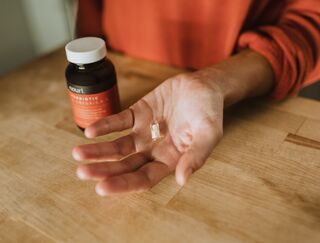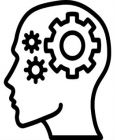Nootropics
How to Use Nootropics to Induce State-Dependent Learning
Take control of your internal state to learn skills and perform academically.
Posted November 14, 2021 Reviewed by Vanessa Lancaster
Key points
- State-dependent learning is when behavior is learned better if your internal mental state is similar during practice and testing the behavior.
- The learning enhancement effects of nootropic substances depend heavily on frequency of use, the dose consumed, and factors yet to be discovered.
- Currently, there is not much evidence to support the use of nootropics to induce state-dependent learning.

State-dependent learning (SDL) is the psychological phenomenon in which behavior is learned better if your internal mental state is similar during practice and testing the behavior. It is a powerful performance enhancement strategy that anyone can use. In this article, we will look at what type of questions need to be answered before knowing how to use nootropics to utilize SDL effects for cognitive enhancement optimally.
In the previous two articles of this series on how to use SDL to learn better, we looked at empirical evidence for state-dependent learning and how to use SDL to enhance academic performance.
In the first of these articles, we saw that when the internal context (caffeine or placebo) was similar in the first and second session, exposure therapy was more effective than if the internal states of the participants were incongruent. The finding from this study indicates that caffeine could effectively work to sufficiently alter the internal mental context to result in state-dependent learning.
In the second article of this series, we saw that there is evidence that SDL likely depends specifically on mood-related aspects of a person’s internal mental context. For example, caffeine has effects on mood in humans.2 However, reaping the benefits of SDL might not be as simple as, for example, using caffeine when studying for a test and then when taking the test.
Another study found that 5mg/kg of body weight caffeine did not result in SDL when participants were given the drug during a practice and test session. The participants in this study habitually used caffeine in 50–150 mg doses daily before study enrolment. It was observed in this study that 5mg/kg increased alertness but did not result in any changes in feelings of pleasantness.
Alcohol is a widely used psychoactive drug that many people also become addicted to. One of the mechanisms through which it is believed by some researchers to exert its addictive effects is by an increase in pleasantness through the release of dopamine.3 Dopamine is an essential neurotransmitter to our experience of pleasure and motivation.
It is not known in detail which specific psychological mechanisms cause SDL effects to increase or decrease. However, the pleasure and motivation aspects and the worrying dimension of mood could be central determinants of SDL effects.2,4
Consistent caffeine use is known to alter the biochemical effects of the nootropic. If you habitually use caffeine and then take a longer (1 week+) break from caffeine, you might recognize from that experience that when you used caffeine for the first time after your break, the effects were stronger than when you habitually use caffeine.
In animal studies, it has been found that 15 days of consistent use of the drug reduces circulating catecholamines–a class of chemicals in which dopamine is included.5 Could it be that the effects of caffeine and other drugs on SDL depend partially on the pleasantness-inducing dopaminergic effects they exert (especially in non-habitual users)? It's possible, but it’s hard to say based on the scattered sources of evidence related to this question.
There are likely other neurochemical and psychological determinants of SDL effects than just dopamine and the mood dimensions discussed above. Nonetheless, a study explicitly designed to evaluate the effects of different dopaminergic drugs on different aspects of mood and SDL with participants that are and aren’t tolerant to these drugs could yield important insights into the mechanisms of SDL. Such a study would also be very useful for helping us understand how we can use nootropics effectively to utilize the SDL phenomenon to enhance learning performance.
The research discussed above suggests that the learning enhancement effects of nootropic substances depend heavily on frequency of use and the dose consumed as well as factors that are yet to be discovered.
So, what could you do right now to use nootropics to induce state-dependent learning? There is not much evidence to base such a project on, but it is likely that if you maximize the pleasure and motivation effects of the nootropic by not using it habitually could be a good practice. In practice, this could mean using caffeine only during your longest and most important couple of study sessions before and during the test.
Ultimately, no amount of research on the specific nootropic use regimens will yield guarantees of results for you. But evidence-based deliberate nootropic self-experimentation, such as by incorporating state-dependent learning principles, can, over time, enable you to develop a method of use that helps you feel and perform better.
References
[1] https://content.apa.org/record/2003-02091-004
[2] https://www.sciencedirect.com/science/article/abs/pii/S0005796798001909
[3] https://www.ncbi.nlm.nih.gov/pmc/articles/PMC4120286/
[4] https://www.cambridge.org/core/services/aop-cambridge-core/content/view…
[5] https://www.frontiersin.org/articles/10.3389/fpsyg.2015.01994/full




